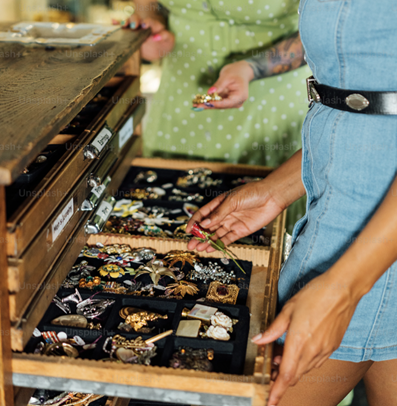Eco-Friendly Dinnerware: Celebrating Sustainability with Climate-Friendly Choices
necessity in our households and many modern offices. For instance, if you move into a new apartment and are setting up your home, one area you might prioritize in your setup is the kitchen and dining area. This space houses the items we use for eating and drinking, including cutlery, serving dishes, cups, and other accessories essential for meal service. Now, given their widespread use, their impact on the environment is noteworthy.

Photo by fauxels from Pexels
However, most of the dinnerwares are made up of materials that are harmful to our environment, which begs the need to look into more sustainable choices. If success can be achieved with sustainability regarding dinnerware, the impact on the ecosystem and environment will be appreciable.
What is Eco-Friendly Dinnerware?
Eco-friendly dinnerware is food-related utensils made from environmentally friendly materials, materials that are not harmful to the environment, and those that contribute minimally if at all to climate change right from their production process, distribution, use, and disposal or recycling. A fun fact about the origin of this product is that most of the materials that are used for its production are very well known, like pulp wood fiber, bagasse (this is obtained from sugar cane fibers), bamboo, recycled ceramic clay, areca palm leaf, corn starch, cashew-tree resin.

Manufacturing eco-friendly dinnerware is a multi-step process; it varies depending on the nature of the final product and the raw materials used, but in a general sense, it involves the following steps;
- Sourcing – here, the raw materials are carefully sourced or harvested as the need be.
- Sorting and cleaning – the raw materials need to be carefully separated from dirt and impurities.
- Mixing and blending – here, additives such as binders, colorants, and the like are incorporated.
- Molding – the desired shape of the product to be made is created; the products can either be hand carved or poured into a mold or pressed.
- Curing – the products are left to harden.
- Finishing – the products are either polished, glazed, or sanded for beautification.
- Quality control – ensures that only durable products are packaged and sent out for consumption.
You May Also Like: Kitchen Sustainability: Creating an Eco-friendly Space
Environmental Benefits of Eco-Friendly Dinnerware
Saves Energy: Compared to traditional dinnerware production, which can be energy-intensive, eco-friendly options often utilize renewable resources and innovative processes that minimize energy consumption. This translates to a smaller carbon footprint from the get-go.

Healthy Usage/Storage: Some traditional dinnerware, especially older or cheaply made options, can contain harmful chemicals like PFAS (Per- and polyfluoroalkyl substances), lead, and cadmium. These can leach into food and pose health risks. Eco-friendly dinnerware, made from natural or recycled materials, offers peace of mind. You can enjoy your meals knowing your dinnerware is safe for you and your family.
Saves Cost: While the initial cost of eco-friendly dinnerware might be slightly higher, it’s an investment in your wallet and the planet. These durable options are designed to last, eliminating the need for frequent replacements like disposable plastic. Additionally, some eco-friendly materials like bamboo require minimal processing, potentially lowering production costs for manufacturers.
Aesthetics: Gone are the days of sacrificing style for sustainability. Eco-friendly dinnerware comes in a wide range of beautiful designs, textures, and colors. You can find options that complement your existing kitchen aesthetic, from sleek bamboo plates to charming recycled glass bowls.
Minimal Waste Pollution: Eco-friendly dinnerware tackles the issue of waste pollution head-on. Many options are either recyclable or compostable, minimizing their impact on landfills. Recycled materials give new life to existing waste, while compostable options break down naturally into nutrient-rich soil. This creates a closed-loop system, reducing reliance on virgin resources and promoting a more sustainable future.
Implementing Eco-Friendly Dinnerware in Your Business or Home
With the right approach, anyone, including you, can scrap the use of traditional dinnerware and switch to eco-friendly ones without much hassle. You can follow the guide below to help you make that switch with ease.
Step-by-Step Guide
Access Current Usage: The first thing you need to do is an inventory of your current dinnerware usage. Pick out the items you use most frequently and in what quantities. This is to help you prioritize which alternatives to source first.
Research and Source Reliable Suppliers: Look for suppliers who specialize in eco-friendly products. Ensure they are credible by checking certifications and customer reviews. Suppliers should be transparent about their sourcing and manufacturing processes. You do not want to make the wrong choice when making this transition.
Evaluate Quality and Durability: Not all eco-friendly dinnerware is created equal. Request samples to test the quality and durability of the products. Ensure they can withstand regular use and meet your standards.
Budget and Plan for Costs: While eco-friendly options can be more expensive initially, plan your budget with a long-term perspective. Consider the durability and potential savings from reduced replacements over time.
Gradual Implementation: If switching all at once is overwhelming, start by replacing the most frequently used items. Gradually expand to a full set as you become more comfortable with the products and processes.
You May Also Like: 4 Innovative Strategies for Sustainable Business Energy Management
Training Staff and Educating Guests
Eco-friendly dinnerware offers a wealth of benefits, but for your efforts to truly shine, your staff and customers need to be on board. Understanding why these sustainable options are important will not only empower them to use them correctly but also create a shared commitment to environmental responsibility.
Therefore, endeavor to train your staff and meake sure they know why you are making the switch, emploring them to also communicate same to your guests. You also want to educate your guests by using signages, brouchures or even digital content. And then, be open to feedback from your staff and guests as well. You can use their opinions to constructivey improve your practices and address any concerns.
Hosting Eco-Friendly Events
- Planning: Plan in advance for the type, brand, or design of renewable dinnerware you intend to use. Ensure you have enough supplies to match the event’s aesthetic and functional needs.
- Catering Options: If you working with caterers, ensure they are on board with your sustainability goals. Provide them with eco-friendly options or request they adopt sustainable practices all through the event.
- Waste Management: Set up clear waste disposal and recycling stations at your event. Educate attendees on proper disposal methods to ensure maximum environmental benefit.
- Promote Your Efforts: Use your eco-friendly events as a platform to promote your efforts towards sustainability and a healthier environment.
In recent times, there have been a few successful eco-friendly events that highlight different approaches to sustainable dining, some of which include:
Conclusion
Adopting eco-friendly dinnerware offers numerous benefits, from reducing environmental impact to ensuring safer, healthier dining experiences. By following these steps and integrating sustainable practices, you contribute positively to the environment while setting a valuable example for others to follow.
Remember, the journey toward sustainability is ongoing and continuous. We encourage eco-conscious individuals and forward-thinking businesses to embrace change and join the movement towards a more sustainable future.
Numerous resources are available for those ready to make the switch or seeking more information. Websites like Green Paper Products offer a wide selection of eco-friendly dinnerware options. Additionally, organizations such as the Environmental Protection Agency (EPA) and the Green Restaurant Association provide valuable guidelines and certifications for sustainable practices in food service.



















